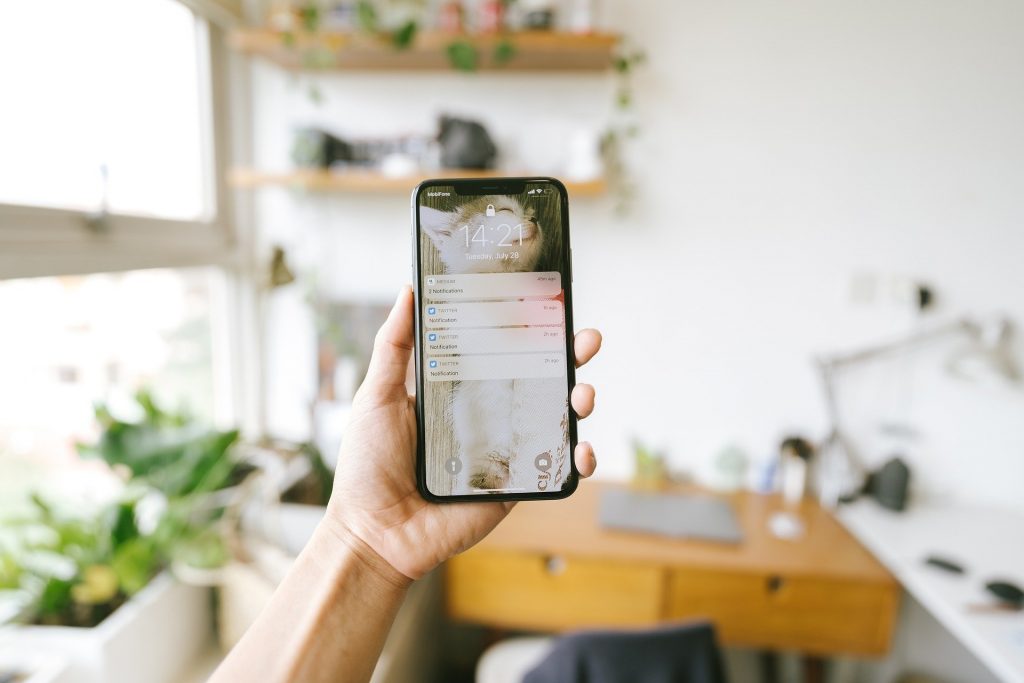Last Saturday evening I received a push notification about the fact that the CoronaCheck-app was unavailable due to the amount of people using the app at the same time. Then a notification from Instagram, one of the accounts I follow posted something on their story! Soon followed notifications from Youtube, Twitter and my Gmail. An quick example of the different kind of notifications I received on my phone during the weekend.
Advantages
Now, the fact that I receive a considerable amount of notifications is partly because I myself turned them on. I like the fact that you don’t need to have an app opened to receive notifications. One of the practical advantages of push notifications is that the things I want to see is not lost in the sea of all digital content available. That means less energy spent on actually finding the things I want to see. I find this especially true when it comes to Youtube, there is so much content that even when you are subscribed to channels, there is a chance that you will miss content just because of the vast amount of videos uploaded per day. Youtubers often end their closing pitch with ‘please turn on notifications so you don’t miss anything!’ – instead of just asking to subscribe.

Always connected, always notified
In H.G. Wells book, World brain, he describes the phenomenon that when someone is murdered in China, people living in England would hear about that almost at once. Push notifications take that level of quick communication to another level and they are very time sensitive, especially when it comes to mobile news apps and ‘breaking news’.
Besides that, usage of push notifications as a form of news engagement has increased in the last few years. From 2016 to 2017, the use of mobile news push notifications rose from 8% to 20%. Pew Research reported that just over half of smartphone users got news alerts in 2016 (Stroud, Peacock & Curry). Average US smartphone users receive about 46 app push notifications per day.
But are all push notifications important enough to be popping up on your screen? Lawrence Hung describes in a post for OneSignal that push notifications should always be relevant to the subscriber and provide information that the recipient can act on. When push notifications are not useful, they can be annoying or disruptive. This in turn can cause people to unsubscribe or even delete apps. John Oliver makes fun of useless push notifications from news websites in a web segment of his show ‘Last Week Tonight’:
I have also experienced irritation because of excessive notifications, and have for instance unsubscribed from mailing lists or youtubers. I also limited the amount of channels that I have notifications turned on for, on Youtube and Instagram. Deleting apps is also something I have done, especially when apps push notifications to ask for a rating, which is something Hung reports as a bad tactic for push notifications.
So in the end, push notifications can come in very handy if you want an update on your order status, the news or your favorite youtubers. But you have to be careful not to overwhelm yourself by getting to many notifications, which can cause irritation.
References
H.G. Wells, World Brain (New York 1938).
Natalie Jomini Stroud, Cynthia Peacock and Alexander L. Curry, ‘The Effects of Mobile Push Notifications on News Consumption and Learning’, digital journalism 8:1 (2020) 32-48.
Onesignal. onesignal.com/blog/what-you-should-be-using-push-notifications-for/
Business of apps. businessofapps.com/marketplace/push-notifications/research/push-notifications-statistics/



Recent Comments